M3.9 and M1.5 solar flares erupt from AR 3112
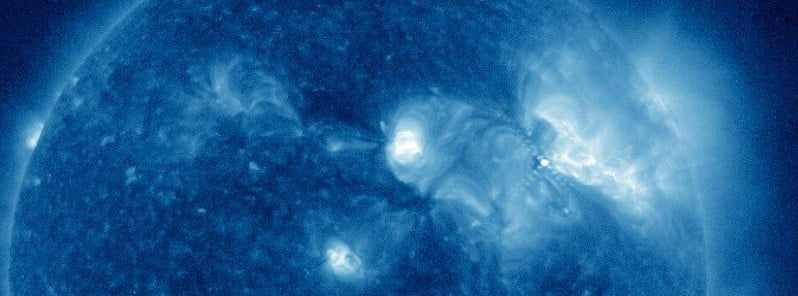
An impulsive M3.9 solar flare erupted from Active Region 3112 (Beta) at 08:42 UTC. The flare started at 08:36 and ended at 08:46 UTC. It was followed by M1.5 at 10:52 UTC from the same region.
The event was associated with a Type II Radio Emission (estimated velocity 967 km/s), indicating a coronal mass ejection (CME) was associated with a flare event. SDO AIA 304 imagery confirms this.
While the analysis of this event is still in progress as we wait for more LASCO C2 and C3 imagery to arrive, it’s possible there could be at least a part of the CME heading toward us.
A Type II Radio Emission (estimated velocity 237 km/s) was associated with the M1.5 event, too.
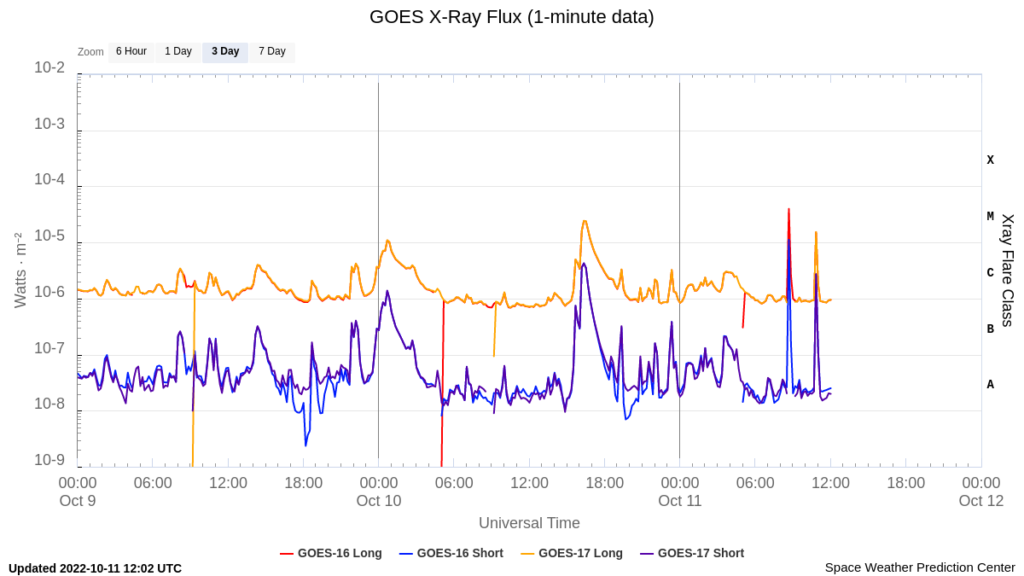

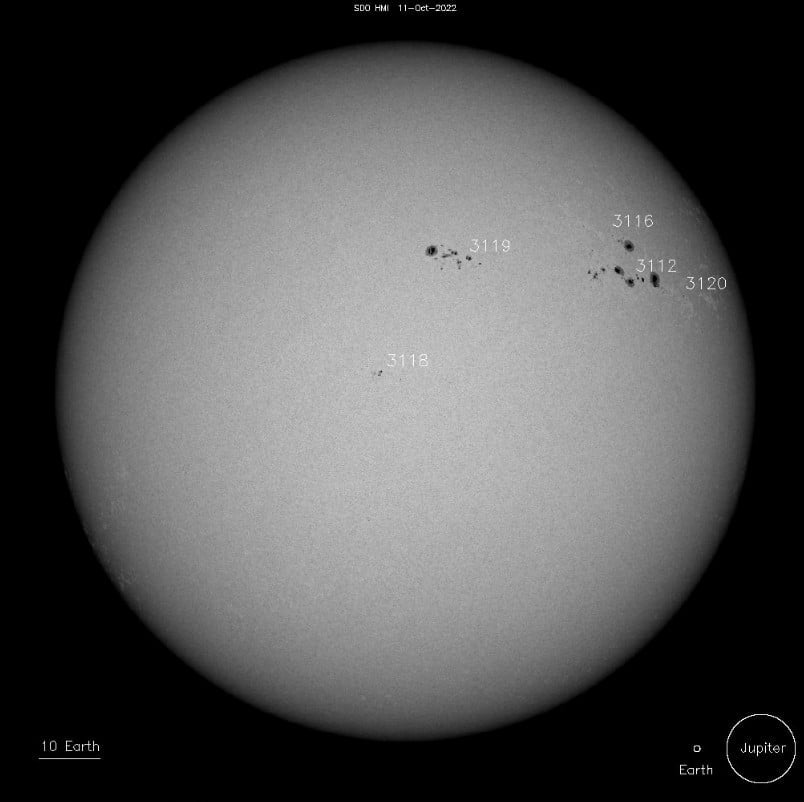

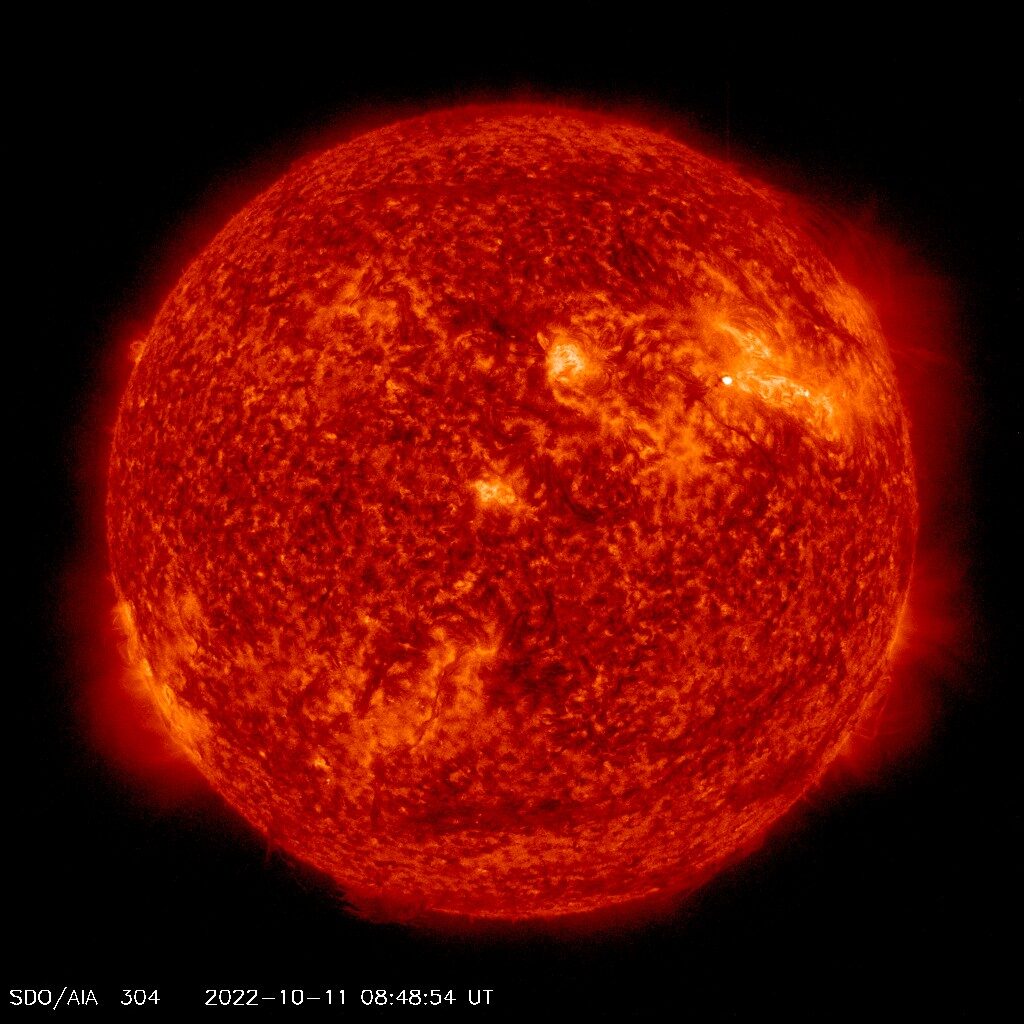

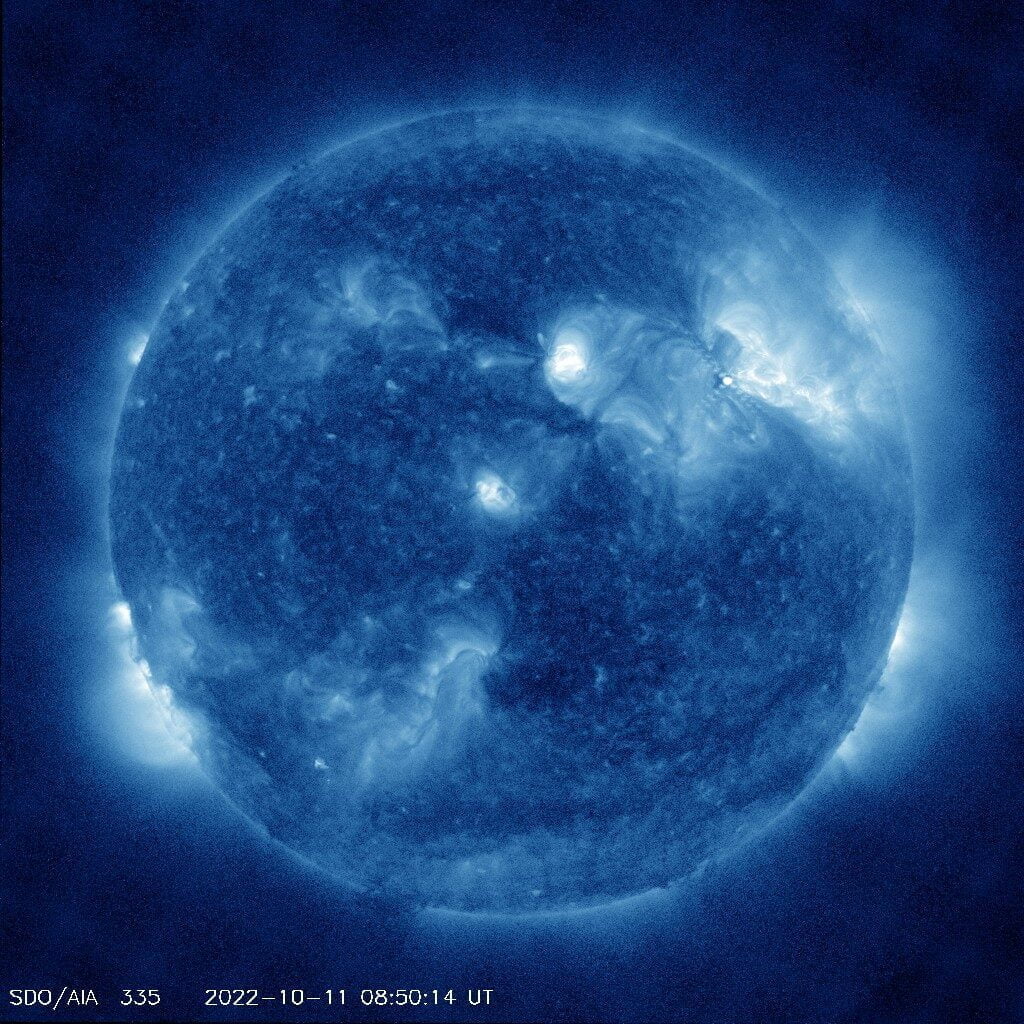

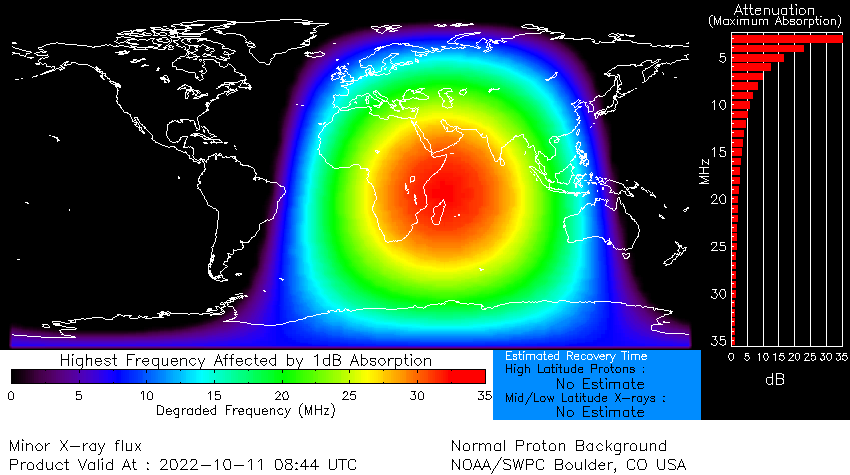

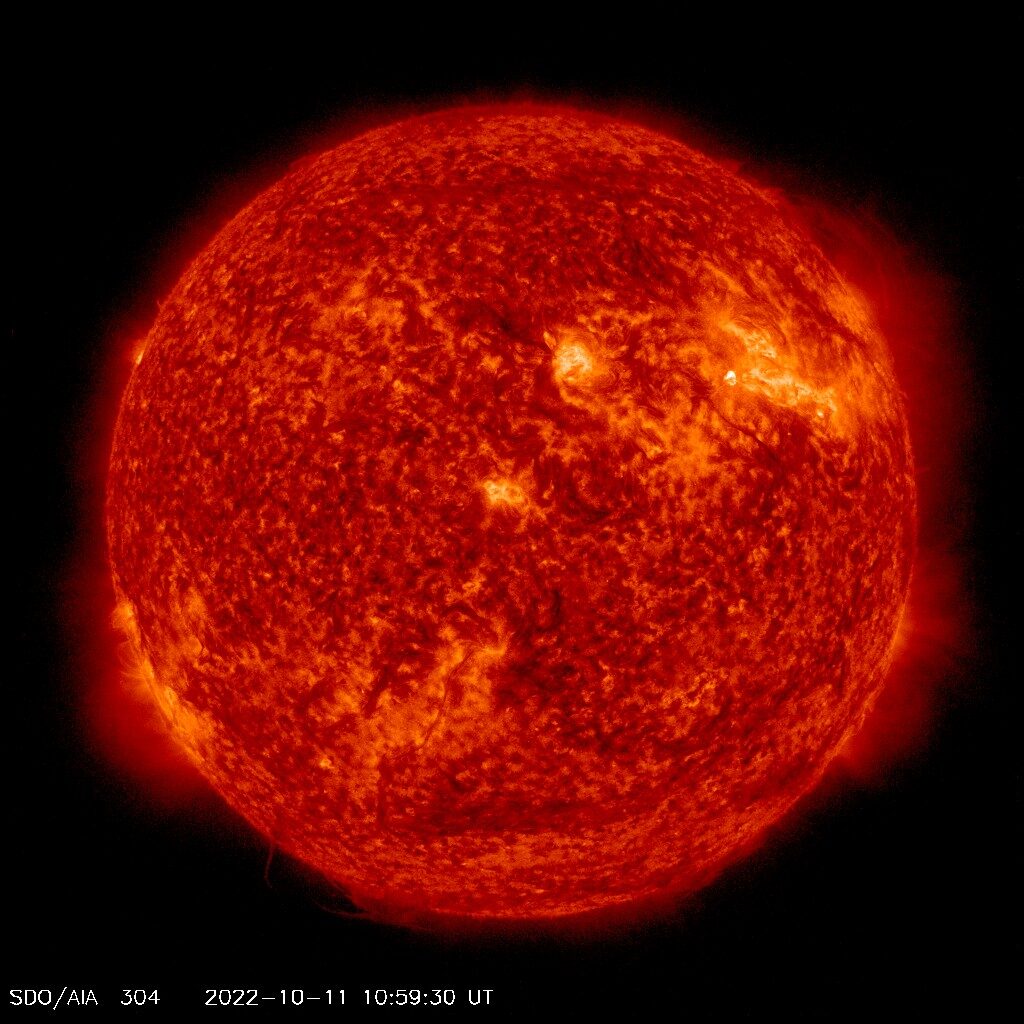

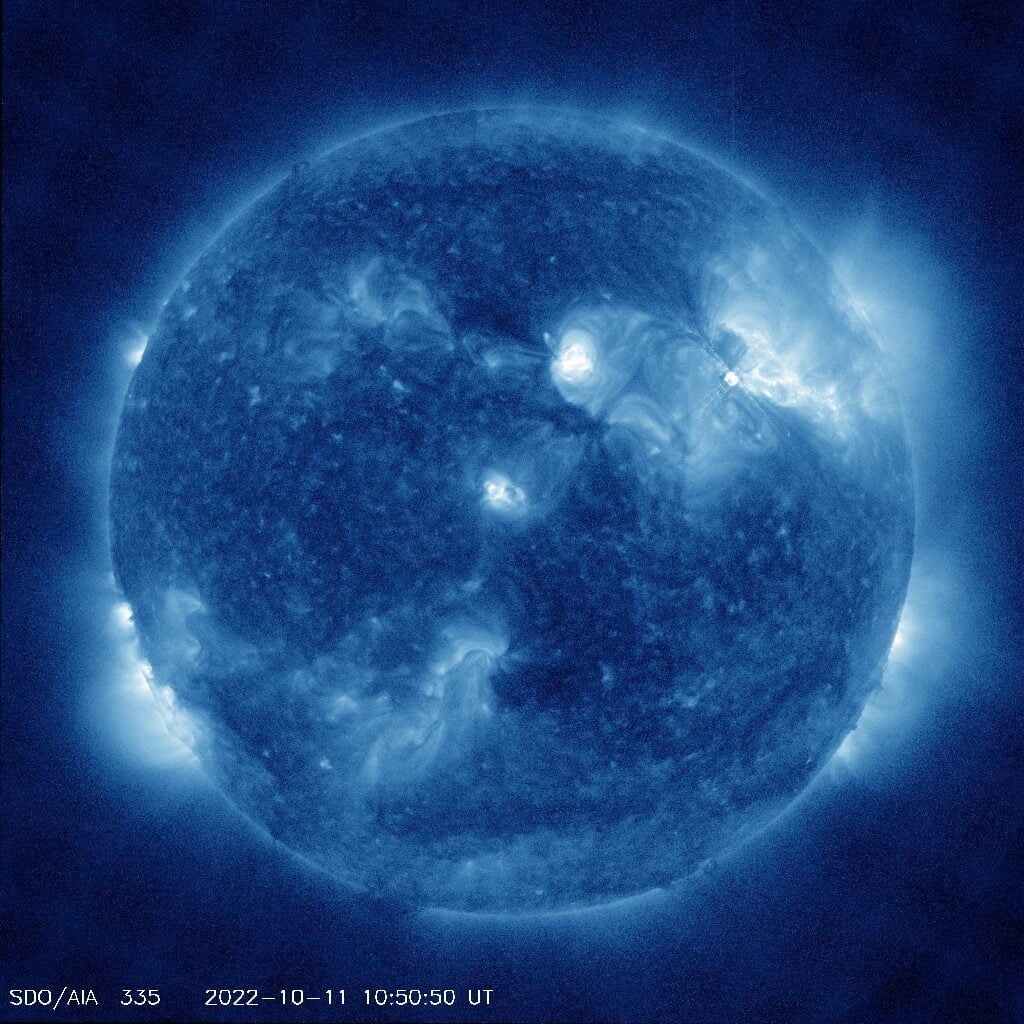

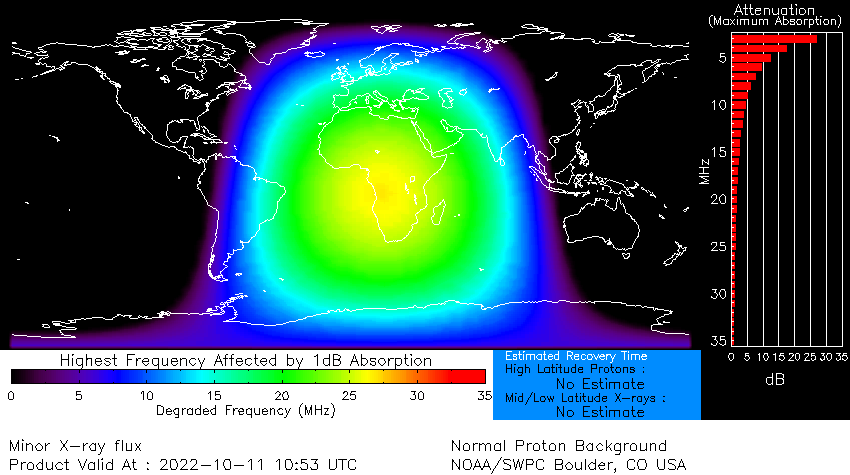

A CME off the SE limb, first visible in LASCO C2 imagery at 23:48 UTC on October 9, was associated with a filament eruption centered near S24E45.1
Analysis and modeling of the CME suggested the ejecta was off of the Sun-Earth line.
Solar activity is expected to be low over the next 24 hours, with a chance for M-class flares (R1-R2, Minor-Moderate) through October 13, primarily due to the flare potential of Regions 3112 and 3116.
There is a possibility of a grazing from a CME that left the Sun on October 7 to cause a mild enhancement in the interplanetary magnetic field (IMF) and density on October 12.
The geomagnetic field is likely to be at quiet to unsettled levels on October 11 as the positive polarity coronal hole high speed stream slowly diminishes.
Unsettled to active levels are possible on October 12 due to grazing from the October 7 CME. Mostly quiet conditions are expected for October 13.
Update:
Initial analysis of the two October 11 CMEs indicate passage ahead of Earth orbit and appear unlikely to have any Earth-directed components, SWPC forecasters said at 00:30 UTC on October 12.
References:
1 Forecast Discussion issued: 2022 Oct 11 1230 UTC – Prepared by the U.S. Dept. of Commerce, NOAA, Space Weather Prediction Center
Featured image credit: NASA/SDO, The Watchers


Commenting rules and guidelines
We value the thoughts and opinions of our readers and welcome healthy discussions on our website. In order to maintain a respectful and positive community, we ask that all commenters follow these rules.